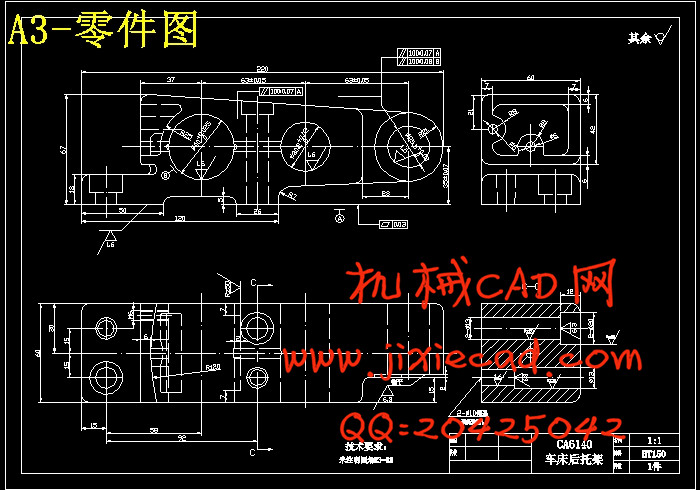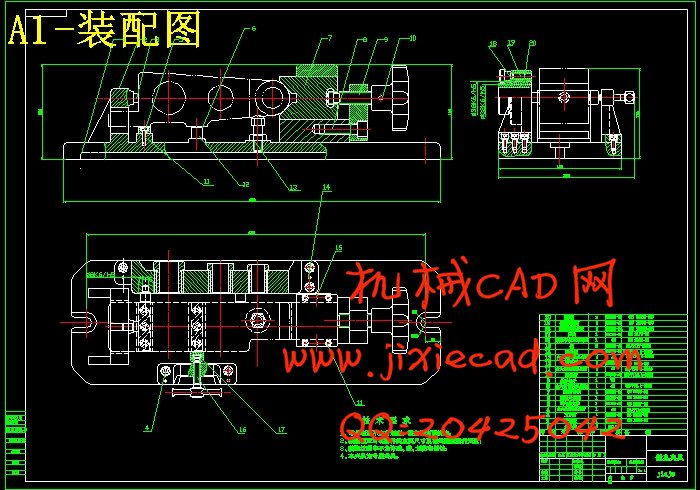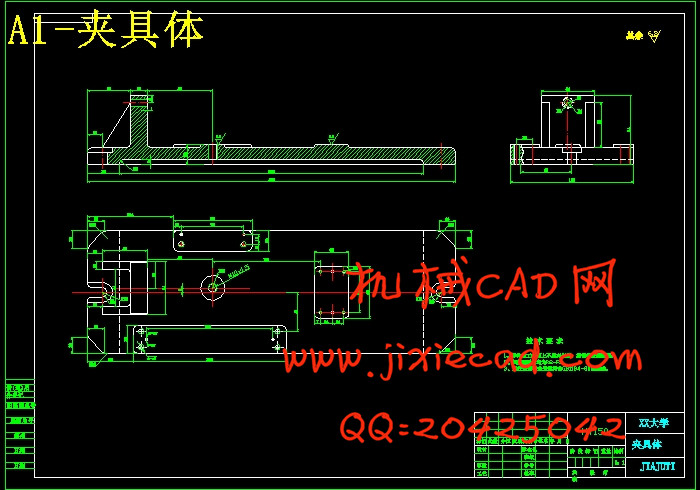设计简介
摘 要
在生产过程中,使生产对象(原材料,毛坯,零件或总成等)的质和量的状态发生直接变化的过程叫工艺过程,如毛坯制造,机械加工,热处理,装配等都称之为工艺过程。在制定工艺过程中,要确定各工序的安装工位和该工序需要的工步,加工该工序的机车及机床的进给量,切削深度,主轴转速和切削速度,该工序的夹具,刀具及量具,还有走刀次数和走刀长度,最后计算该工序的基本时间,辅助时间和工作地服务时间。
关键词 工序,工艺,工步,加工余量,定位方案,夹紧力
ABSTRACT
Enable producing the target in process of production (raw materials, the blank , state of quality and quantity on part become always ) take place direct course of change ask craft course, if the blank is made, machining, heat treatment , assemble etc. and call it the craft course. In the course of making the craft , is it confirm every erector location and worker step that process need this of process to want, the locomotive of processing , this process , and the entering the giving amount of the lathe, cut depth , the rotational speed of the main shaft and speed of cutting, the jig of this process, the cutter and measuring tool, a one hundred sheets of number of times still leaves and a one hundred sheets of length leaves, calculate basic time of this process , auxiliary time and service time of place of working finally.Keywords: The process, worker one, worker's step , the surplus of processing, orient the scheme , clamp strength
目 录
摘 要. I
ABSTRACT II
目 录. 1
第1章 绪论. 3
1.1 机械加工工艺概述. 3
1.2机械加工工艺流程. 3
1.3夹具概述. 4
1.4机床夹具的功能. 4
1.5机床夹具的发展趋势. 4
1.5.1机床夹具的现状. 5
1.5.2现代机床夹具的发展方向. 5
第2章 后托架加工工艺. 3
2.1 后托架的工艺分析. 3
2.2 后托架的工艺要求及工艺分析. 3
2.3 加工工艺过程. 4
2.4 确定各表面加工方案. 4
2.4.1 在选择各表面及孔的加工方法时,要综合考虑以下因素. 4
2.4.2 平面的加工. 4
2.4.3孔的加工方案. 4
2.5 确定定位基准. 5
2.5.1 粗基准的选择. 5
2.5.2 精基准选择的原则. 5
2.6 工艺路线的拟订. 6
2.6.1工序的合理组合. 6
2.6.2 工序的集中与分散. 7
2.6.3 加工阶段的划分. 8
2.6.4 加工工艺路线方案的比较. 9
2.7 后托架的偏差,加工余量,工序尺寸及毛坯尺寸的确定. 11
2.7.1 毛坯的结构工艺要求. 12
2.7.2 后托架的偏差计算. 12
2.8 确定切削用量及基本工时(机动时间). 16
2.8.1 工序1:粗、精铣底面. 16
2.8.2 工序2 粗、半精、精镗CA6140侧面三杠孔. 17
2.8.3 工序3:钻顶面四孔. 24
2.8.4 工序4:钻侧面两孔. 28
2.9 时间定额计算及生产安排. 30
2.9.1 粗、精铣底面. 30
2.9.2 镗侧面三杠孔. 31
2.9.3 钻顶面四孔. 32
第3章 镗孔专用夹具设计. 34
3.1 镗孔夹具设计. 34
3.1.1 研究原始质料. 34
3.1.2 定位基准的选择. 34
3.1.3 切削力及夹紧分析计算. 34
3.1.4 误差分析与计算. 35
3.2 夹具设计及操作的简要说明. 36
结 论. 36
参考文献. 38
致谢. 39







